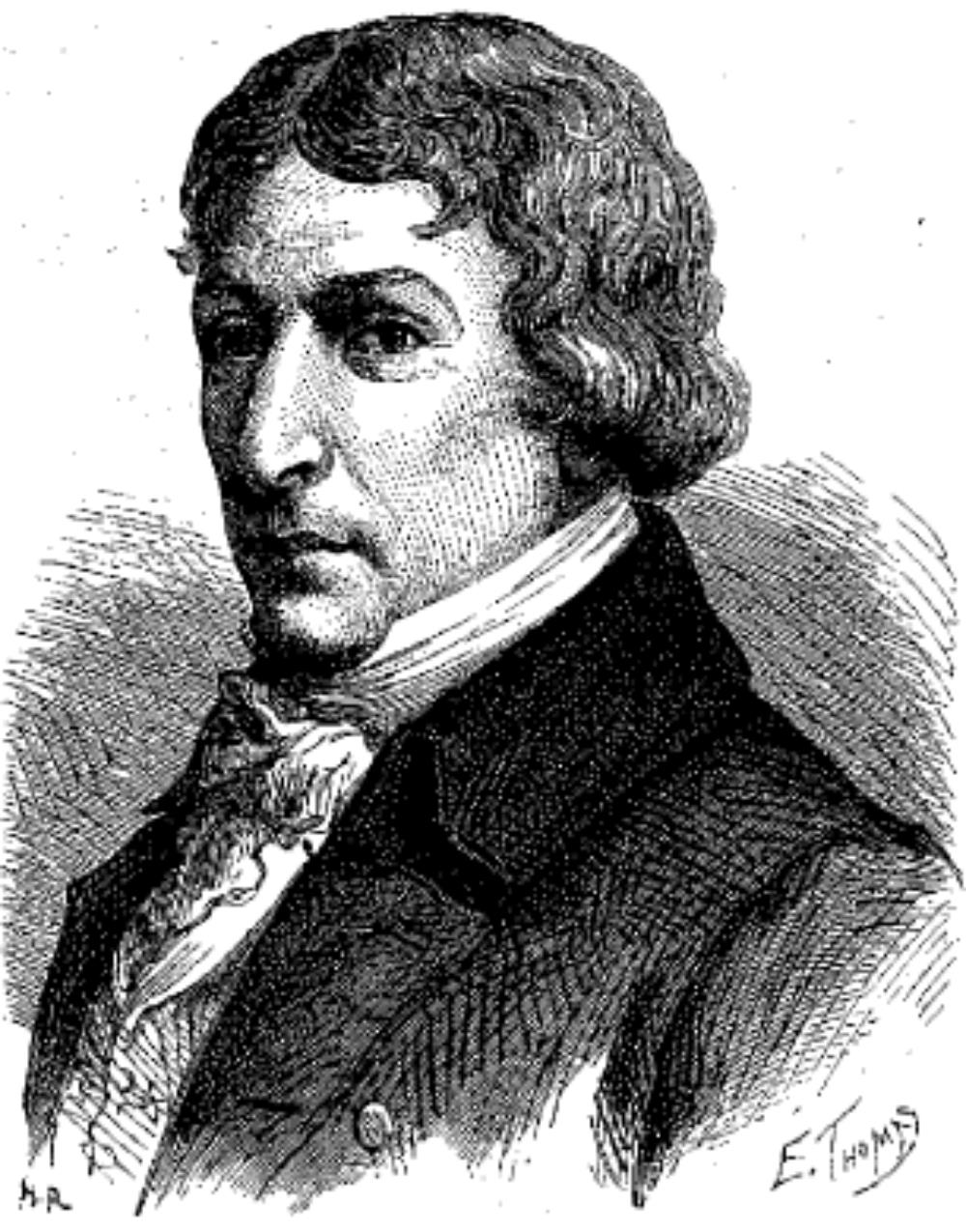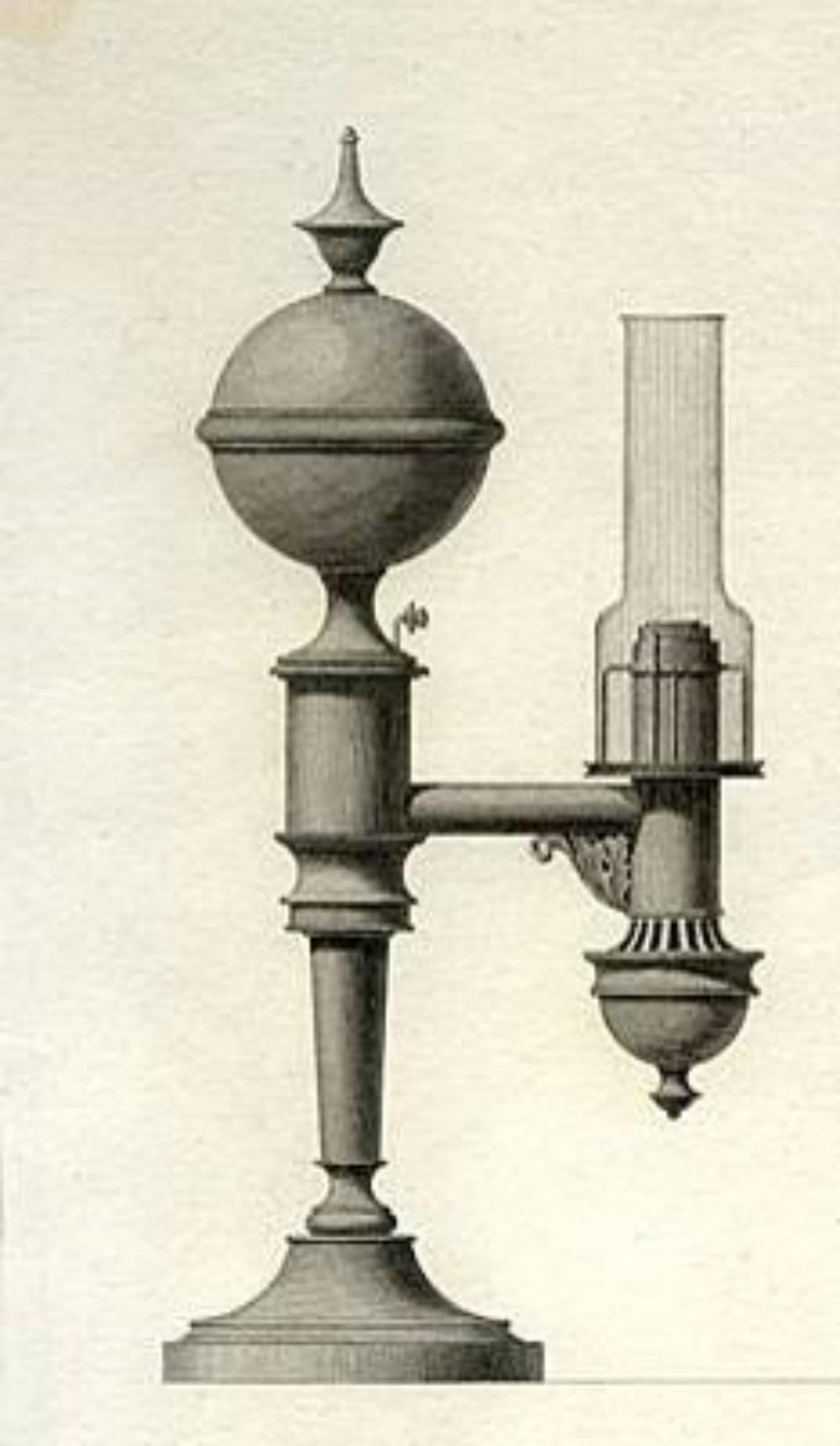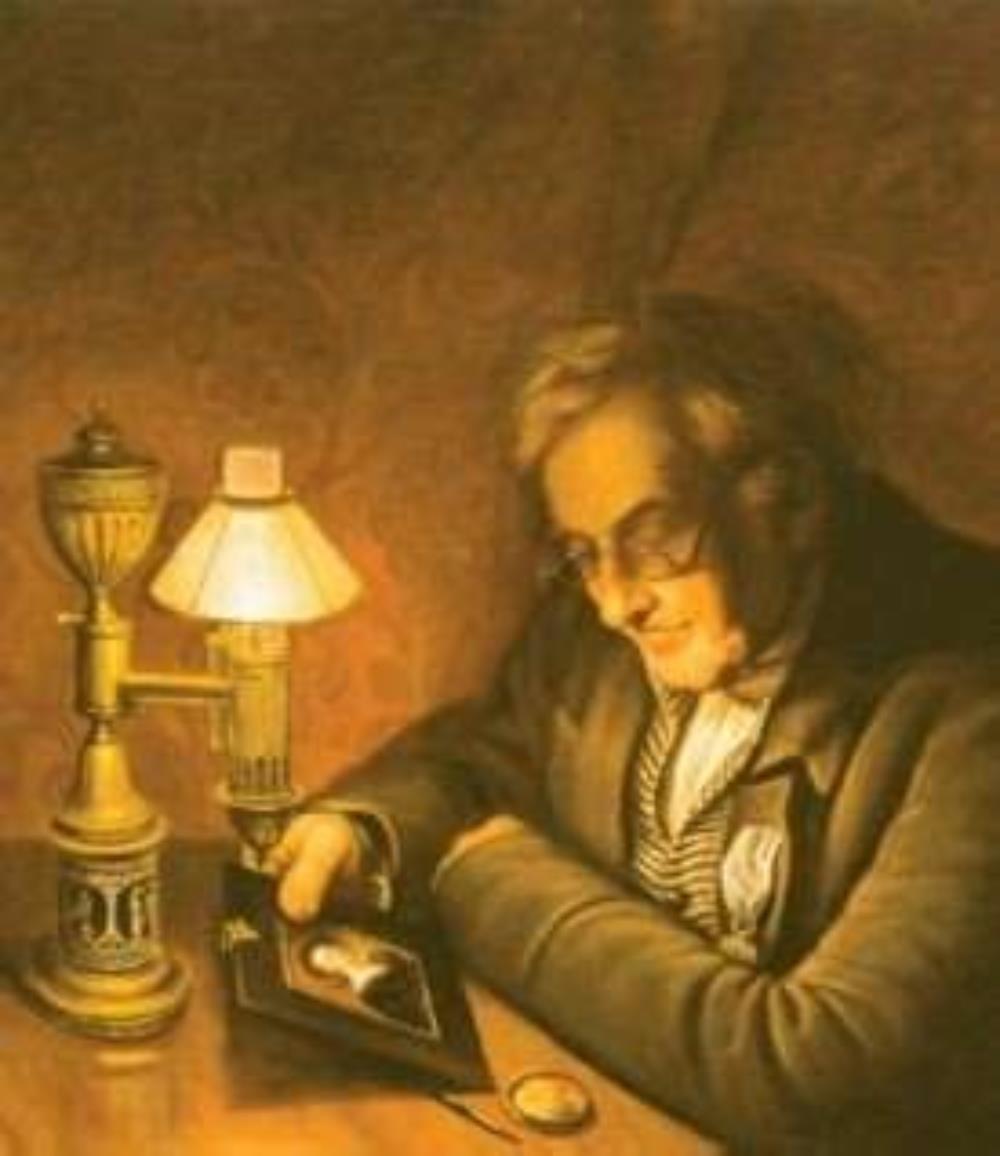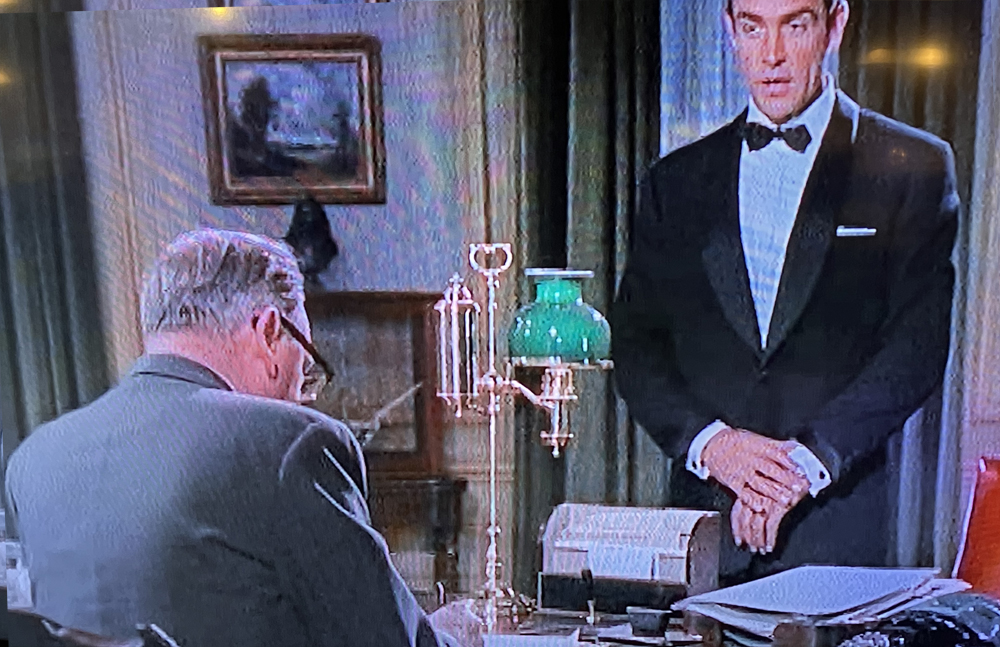The Argand Lamp – New lighting Technology
| < Early Lighthouse Lights | Δ Index | Argand Lighthouse Lamp > |
 François-Pierre-Amédée Argand, usually known as Ami, was born in Geneva on the 5th July 1750.
François-Pierre-Amédée Argand, usually known as Ami, was born in Geneva on the 5th July 1750.
His parents wanted him to follow an ecclesiastic career, but during his early studies he fell in love with science, and abandoned theology.
He moved to Paris and studied under the famous chemist Antoine-Laurent de Lavoisier (who wisely became plain Antoine Lavoisier after the French Revolution,) eventually becoming Professor of Chemistry and Physics.
One of his early interests was the process of distillation. He perfected the shape of pot stills, and the construction of heating furnaces, improving the control of burning, and the transmission of heat.
(He also conducted ballooning experiments the with the Montgolfier brothers. He persuaded them to give up the use of hot air in their balloon, and instead to use hydrogen gas –generated by the action of sprinkling vitriolic (sulphuric) acid on to iron filings. Despite being a dangerous process, the replacement of hot air by hydrogen was key to the success of the Montgolfier brothers.)
In Paris, his distillation pupils included the owners of the wine regions of Languedoc. They became keenly interested in his theories and suggested he turn them into practise. In 1789, Argand moved to Montpellier, where he installed his first distillery.
It was during his stay in the south of France, that Argand had the inspiration for his major invention – the double air-current lamp. It is said that a lamp in a wine cellar caused a fire in a nearby coffee house. Argand noticed that draughts of air caused glowing embers to burst into flame.
He hit on the idea of improving the combustion of an oil lamp, by introducing a current of air. This would increase the light output, and reduce smoke from the flame.
 In 1782 he developed an oil lamp using these ideas. It had two vessels: an oil reservoir and a burner (on the left and right respectively in this diagram.)
In 1782 he developed an oil lamp using these ideas. It had two vessels: an oil reservoir and a burner (on the left and right respectively in this diagram.)
The burner used a flat wick, which was rolled into a cylinder, to allow a current of air to pass inside the wick. A glass chimney sat round the burner and drew a second current of air round the outside of the wick.
The oil reservoir maintained the oil at a constant level at the wick.
Experimenting with oils, he found that while spermaceti (whale) oil was optimal; olive oil could serve as well.
The light was much brighter than that from a candle (by a factor of five to ten), burned cleanly, and was cheaper than using candles.
His design was rapidly adopted across France, Europe and the USA.

You can see this fine example on “M’s” desk near the beginning of the James Bond film, “Doctor No”.
Sadly one of Argand’s partners allowed his patent to lapse, so he failed to see the full benefit of his invention.
One of his associates was Robert Watt of steam engine fame, who also suffered from mishandled patents.
Robert Stevenson realized that Argand’s design could be developed for use in lighthouses.
| < Early Lighthouse Lights | Δ Index | Argand Lighthouse Lamp > |